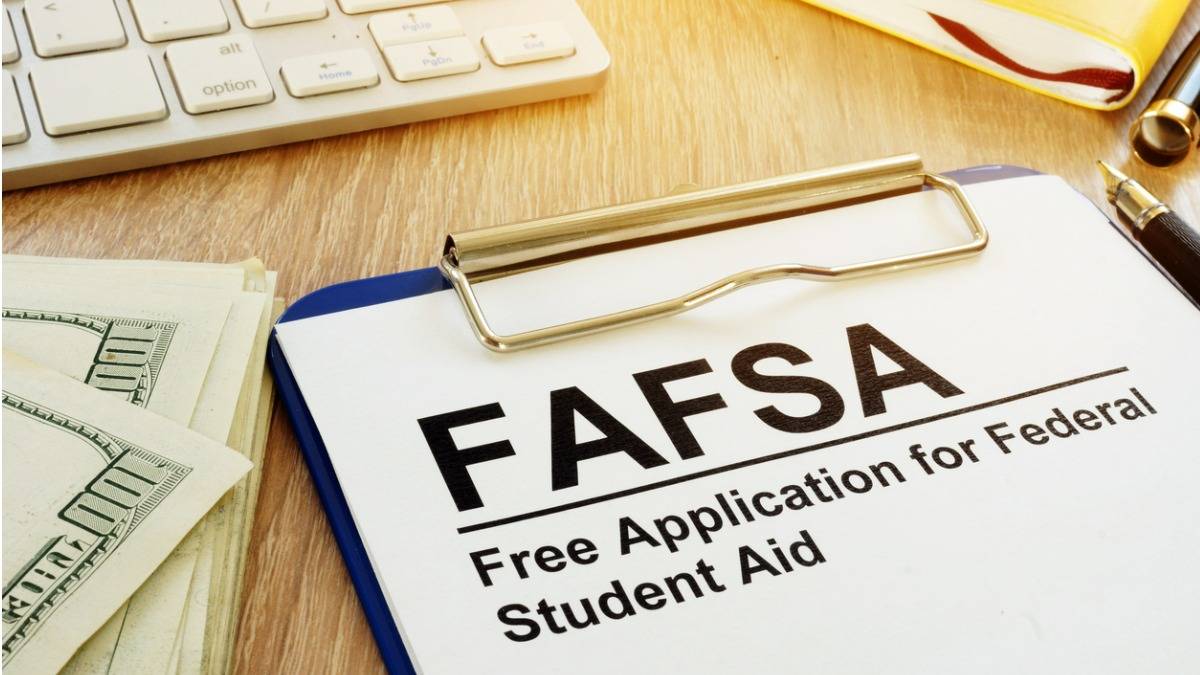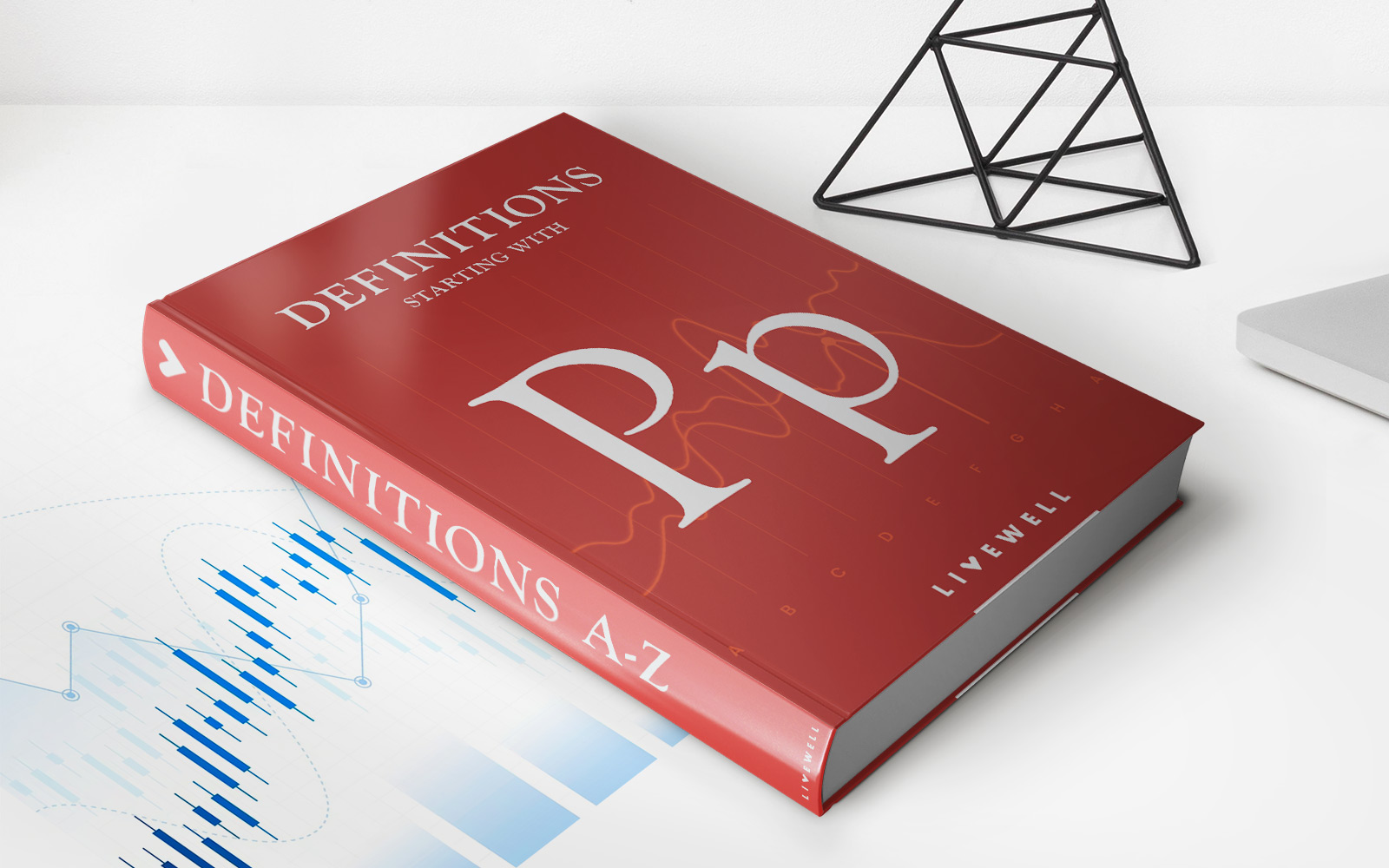

Finance
How To Get Approved For A Private Student Loan
Published: November 3, 2023
Learn how to secure approval for a private student loan and achieve your educational goals with our comprehensive finance guide.
(Many of the links in this article redirect to a specific reviewed product. Your purchase of these products through affiliate links helps to generate commission for LiveWell, at no extra cost. Learn more)
Table of Contents
- Introduction
- Understanding Private Student Loans
- Finding the Right Private Student Loan Lender
- Eligibility Criteria for Private Student Loans
- Gathering Required Documentation
- Applying for a Private Student Loan
- Determining Loan Amount and Repayment Term
- Interest Rates and Fees
- Reviewing and Comparing Loan Offers
- Submitting Loan Application
- Loan Approval Process
- Accepting the Loan Offer
- Conclusion
Introduction
Obtaining a higher education can be a significant financial investment. For many students, scholarships and grants may not cover the entire cost, leading them to explore other options such as loans. While federal student loans are available, they may not always be sufficient to meet the financial needs of students.
This is where private student loans come into play. Private student loans are offered by banks, credit unions, and online lenders to help students bridge the gap between their educational expenses and available funding. These loans can be utilized to cover tuition, books, housing, and other educational expenses.
However, securing approval for a private student loan can be a challenging process. Lenders consider various factors when evaluating loan applications, such as credit history, income, and co-signer availability. Understanding the steps involved and preparing accordingly can improve your chances of approval.
In this article, we will guide you through the process of getting approved for a private student loan. We will provide you with valuable insights into finding the right lender, determining eligibility criteria, gathering required documentation, comparing loan offers, and ultimately successfully obtaining the loan you need to pursue your education.
Remember, getting approved for a private student loan requires careful planning and preparation. By following the steps outlined in this article, you can navigate the process with confidence and secure the financing you need to fulfill your educational dreams.
Understanding Private Student Loans
Private student loans are loans offered by private lenders, such as banks, credit unions, and online financial institutions, to help students finance their education. Unlike federal student loans, which are funded by the government, private student loans are provided by private organizations.
One key difference between federal and private student loans is that private loans typically have higher interest rates. This is because private lenders consider factors such as credit history and income when determining the interest rate for the loan. In contrast, federal student loans have fixed interest rates set by the government.
Private student loans offer flexibility in terms of loan amount and repayment options. You can typically borrow more with a private student loan than with a federal loan, allowing you to cover the full cost of your education. Additionally, private student loans may also offer varied repayment plans, such as interest-only payments while in school or deferred payments until after graduation.
It is important to note that private student loans do not offer the same borrower protections as federal loans. Federal loans provide options such as income-driven repayment plans, loan forgiveness programs, and deferment or forbearance options. Private loans may have fewer options in terms of repayment flexibility and borrower protections, so it’s essential to carefully review the terms and conditions before borrowing.
When considering private student loans, it is crucial to compare different lenders and their offerings. Look for lenders that offer competitive interest rates, flexible repayment options, and good customer service. Reading reviews and researching the reputation of the lender can help you make an informed decision.
Understanding the terms and conditions of private student loans is vital to make an informed borrowing decision. Take the time to understand the interest rates, repayment terms, fees, and any potential penalties for late payments or prepayment. Being well-informed will help you make the best choice for your financial future.
In the next section, we will discuss how to find the right private student loan lender that suits your needs.
Finding the Right Private Student Loan Lender
Choosing the right private student loan lender is key to ensuring you secure the best loan terms and conditions for your education. With numerous lenders available, it’s essential to research and compare your options before making a decision. Here are some factors to consider when finding the right private student loan lender:
- Interest Rates: Compare the interest rates offered by different lenders. Look for lenders that offer competitive interest rates, as this will have a significant impact on the total amount you will repay over the life of the loan.
- Repayment Options: Consider the repayment options available. Look for lenders that offer flexible repayment plans, such as deferred payments while in school or the option to make interest-only payments. This can help ease the financial burden while you are pursuing your education.
- Loan Amounts: Determine the maximum loan amount each lender is willing to offer. Different lenders may have different limits, so it’s important to find one that can provide the amount you need to cover your educational expenses.
- Customer Service: Research the customer service reputation of each lender. Check reviews and ratings to ensure that the lender has a track record of providing excellent customer support. It’s important to have a responsive and helpful lender throughout the loan process.
- Terms and Conditions: Carefully review the terms and conditions of the loan. Pay attention to any fees, penalties, or other conditions that may apply. Ensure that you fully understand the repayment terms and any potential consequences for late payments or default.
Additionally, it’s essential to consider whether you will need a co-signer to secure the loan. A co-signer is someone who will share the responsibility of repaying the loan with you. Having a co-signer with a strong credit history can increase your chances of approval and potentially help you secure a lower interest rate.
Conduct thorough research and compare loan offers from different lenders. Utilize online tools and resources that allow you to compare interest rates, repayment terms, and other key factors. This will help you make an informed decision and find the right lender that meets your needs and financial goals.
Once you have identified a potential lender, gather all the necessary documentation required for the loan application process. This includes proof of identity, income verification, and any other documents specified by the lender. We will discuss the documentation process in the next section.
Eligibility Criteria for Private Student Loans
When applying for a private student loan, it’s important to understand the eligibility criteria set by lenders. Meeting these requirements is crucial to increase your chances of loan approval. While specific criteria may vary among lenders, below are some common eligibility factors to consider:
- Credit History: Private lenders consider your credit history when evaluating your loan application. Having a good credit score is important, as it demonstrates your ability to manage debt responsibly. If you have limited or no credit history, having a co-signer with a strong credit score can greatly improve your chances of loan approval.
- Income and Employment: Lenders typically require proof of income to assess your ability to repay the loan. If you’re employed, you may need to provide recent pay stubs or tax documents. If you’re not employed, demonstrating a stable source of income, such as a scholarship or financial aid, can also be considered.
- Enrollment Status: Most private student loans require you to be enrolled in an accredited educational institution. Lenders may ask for proof of enrollment, such as an acceptance letter or class schedule, to ensure you are actively pursuing your education.
- Citizenship or Residency: Some lenders may require you to be a U.S. citizen or a permanent resident to qualify for a loan. Others may consider international students or non-U.S. citizens with a valid visa, provided they have a co-signer who is a U.S. citizen or permanent resident.
- Age: Lenders typically require borrowers to be at least 18 years old. If you’re a minor, you may need a co-signer to apply for a private student loan.
It’s important to note that each lender may have their own set of eligibility criteria, so it’s crucial to review and understand them before applying. Some lenders may have stricter requirements, while others may have more flexible options. Take the time to compare lenders and find one that aligns with your circumstances.
If you don’t meet the eligibility criteria for a private student loan, you can explore alternative options. This may include borrowing from family or friends, seeking grants or scholarships, or considering federal student loans, which have more lenient eligibility requirements.
Once you have determined your eligibility for a private student loan, the next step is gathering the necessary documentation to support your loan application. We will discuss this in the next section.
Gathering Required Documentation
When applying for a private student loan, you will need to provide various documentation to support your loan application. This documentation helps lenders verify your identity, income, and enrollment status. While specific requirements may vary among lenders, here are some common documents you may need to gather:
- Proof of Identity: You will typically need to provide a valid government-issued identification document, such as a driver’s license, passport, or state ID card. This document confirms your identity and ensures that you meet the age requirements to apply for a loan.
- Proof of Enrollment: Lenders require proof that you are currently enrolled or have been accepted into an accredited educational institution. This can be in the form of an acceptance letter, class schedule, or enrollment verification from your school’s registrar’s office.
- Income Verification: Lenders need to assess your ability to repay the loan, so they may ask for proof of income. This can include recent pay stubs or tax documents if you are employed. If you have other sources of income, such as a scholarship or financial aid, you may need to provide documentation confirming these funds.
- Cosigner Information: If you are using a cosigner to improve your chances of loan approval, you will need to gather their contact details, social security number, and proof of income. The cosigner will also need to provide their identification documents.
- Financial Aid Award Letter: If you have received any financial aid from your educational institution, such as grants or scholarships, include a copy of your financial aid award letter. This helps lenders understand the full picture of your funding sources and may impact the loan amount you are eligible to borrow.
- Bank Statements: Some lenders may request recent bank statements to verify your financial situation. These statements show your current financial standing and can help lenders assess your ability to manage loan repayments.
- Other Supporting Documents: Depending on the lender and your specific situation, there may be additional documentation required. This could include tax returns, proof of residency, or other documents that support your financial circumstances.
It’s important to carefully review the documentation requirements provided by the lender and ensure that you have all the necessary paperwork before starting the loan application process. Be proactive in gathering the required documentation, as this will help streamline the application process and increase your chances of loan approval.
Once you have gathered all the required documentation, you can proceed to the next step, which is the actual application process. We will discuss this in the following section.
Applying for a Private Student Loan
After you have gathered all the necessary documentation, you are ready to begin the application process for a private student loan. Applying for a private student loan typically involves the following steps:
- Research Lenders: Review different lenders and their loan offerings to find the best fit for your needs. Consider factors such as interest rates, repayment options, and customer service reputation. Choose a lender that aligns with your financial goals and preferences.
- Complete the Application Form: Visit the lender’s website or contact them directly to access their application form. Provide accurate and thorough information in the application, including personal details, educational institution information, and loan amount requested. If you have a cosigner, make sure to include their information as well.
- Review and Verify: Before submitting the application, carefully review all the information you have provided. Double-check for any errors or missing details. Ensure that you have included all required documentation as specified by the lender.
- Submit the Application: Once you are confident in the accuracy and completeness of your application, submit it to the lender. You can typically submit the application electronically through the lender’s website or via email. Some lenders may also allow you to apply in person or by mail.
- Receive Loan Offers: After submitting your application, the lender will review your information and make a decision. If approved, you will receive loan offers detailing the loan amount, interest rate, repayment terms, and any associated fees. Review these offers carefully, comparing them to make an informed decision.
- Accept the Loan Offer: Once you have chosen the loan offer that best suits your needs, notify the lender that you accept the offer. This may involve signing loan documents electronically or submitting physical copies signed by you and, if applicable, your co-signer.
- Complete the Loan Process: After accepting the loan offer, the lender may request additional documentation or information to finalize the loan. Provide any requested documentation promptly to ensure a smooth loan disbursement process.
- Loan Disbursement: Once the loan process is completed, the lender will disburse the loan funds to your educational institution. The funds will be used to cover your educational expenses, such as tuition, accommodation, and books.
Throughout the application process, it’s important to stay organized and keep track of all communication with the lender. Maintain copies of all documents and correspondence related to your loan.
Remember to carefully review the loan terms and conditions before accepting an offer. Understand the interest rate, repayment options, fees, and any potential consequences for late payments or default. Being well-informed will help you make responsible financial decisions.
Once your private student loan application is approved and the funds are disbursed, you can focus on your education, knowing that you have the necessary financial support to pursue your academic goals.
In the next section, we will discuss important considerations such as determining the loan amount and repayment term.
Determining Loan Amount and Repayment Term
When applying for a private student loan, it’s important to carefully consider the loan amount you need to cover your educational expenses. Additionally, determining the appropriate repayment term is crucial to ensure you can comfortably manage your loan repayments. Here are some factors to consider when determining the loan amount and repayment term:
Educational Expenses: Begin by estimating your total educational expenses. This includes tuition fees, textbooks, accommodation, and any other costs associated with your education. Consider both current and future expenses to ensure you borrow enough to cover your full academic journey.
Financial Aid and Scholarships: Take into account any financial aid, grants, or scholarships you have received or are eligible for. Subtract these amounts from your estimated expenses to determine how much additional funding you require through a private student loan.
Living Expenses: Consider your living expenses while in school, such as rent, utilities, transportation, and daily living costs. Include these expenses in your loan amount calculation if you need assistance covering them during your studies.
Borrowing Limits: Understand the borrowing limits set by the lender. Each lender may have a maximum loan amount they are willing to offer. Ensure that the loan amount you require falls within these limits to increase your chances of approval.
Repayment Capacity: Assess your ability to repay the loan. Consider your future earning potential in your chosen field of study and the job market outlook. This will help you determine the repayment term that is realistic and manageable for you.
Interest Rates and Monthly Payments: Keep in mind that a longer repayment term may result in lower monthly payments but higher overall interest payments over the life of the loan. Consider the trade-off between shorter repayment terms with higher monthly payments and longer repayment terms with lower monthly payments, and choose a balance that works best for your financial situation.
Once you have considered these factors, you can determine the loan amount and repayment term that align with your financial needs and goals. Remember to only borrow what you truly need, as taking on excessive student loan debt can have a long-term impact on your financial well-being.
After determining the loan amount and repayment term, you can move forward with reviewing and comparing loan offers from different lenders. We will discuss this process in the next section.
Interest Rates and Fees
Interest rates and fees are important factors to consider when selecting a private student loan. These components affect the cost of borrowing and can have a significant impact on the total amount you will repay over the life of the loan. Here are some key considerations regarding interest rates and fees:
Interest Rates: The interest rate is the cost of borrowing the money and is expressed as a percentage. Private student loans typically have variable or fixed interest rates. Variable interest rates can fluctuate over time, while fixed interest rates remain the same throughout the duration of the loan. Consider the pros and cons of each option and choose the one that best suits your financial situation and preferred level of certainty.
Factors Affecting Interest Rates: Private lenders consider several factors when determining the interest rate for a loan. These factors may include your credit history, income, employment status, and, if applicable, the creditworthiness of your co-signer. Having a good credit score and a stable income can help you secure a lower interest rate. It’s important to review and compare interest rates offered by different lenders to find the most favorable option.
Origination Fees: Some private student loans may come with origination fees, which are upfront fees charged by the lender. These fees are typically a percentage of the loan amount and are used to cover administrative costs. It’s essential to factor in these fees when comparing loan offers, as they can contribute to the overall cost of borrowing.
Annual Percentage Rate (APR): The APR takes into account both the interest rate and any applicable fees, providing a more comprehensive understanding of the total cost of borrowing. The APR allows for easier comparison between different loan offers, as it accounts for both the interest rate and any associated fees.
Grace Period: Some lenders may offer a grace period, which is a period of time after graduation or leaving school where you are not required to make loan payments. This grace period can vary among lenders and can be an important consideration, particularly if you anticipate needing time to secure employment before starting loan repayments.
When comparing loan offers, carefully review the disclosed interest rates, APR, and any associated fees. Use online calculators or tools to estimate the total cost of borrowing and the monthly repayments for different loan scenarios. This will help you make an informed decision based on your financial circumstances and budget.
Remember, choosing a loan with a lower interest rate and minimal fees can save you money over the life of the loan. Take the time to review all the terms and conditions, and ensure that you understand the impact of the interest rates and fees on your loan repayment.
In the next section, we will discuss the process of reviewing and comparing loan offers from different lenders.
Reviewing and Comparing Loan Offers
When applying for a private student loan, it’s important to review and compare loan offers from different lenders. This step allows you to assess the terms and conditions of each offer and make an informed decision. Here are some key aspects to consider when reviewing and comparing loan offers:
Interest Rates: Compare the interest rates offered by different lenders. Remember that even a slight difference in interest rates can impact the total amount you will repay over the life of the loan. Choose the loan with the most competitive interest rate that aligns with your financial goals.
Repayment Terms: Evaluate the repayment terms of each loan offer. Consider the length of the repayment term, as shorter terms may result in higher monthly payments but lower overall interest costs. Longer terms may offer lower monthly payments, but you will pay more in interest over time. Assess how the repayment term fits into your financial plans and ability to manage the loan payments.
Fees: Take into account any fees associated with each loan offer. Origination fees and other charges can add to the overall cost of borrowing. Compare the fees charged by different lenders and factor them into your decision-making process.
Loan Amount: Consider the maximum loan amount offered by each lender. Ensure that the loan amount meets your needs and covers your educational expenses. Be cautious not to borrow more than necessary to avoid unnecessary debt.
Repayment Options: Review the repayment options provided by each lender. Look for flexibility, such as deferment or forbearance options, that can help you manage your loan payments during challenging times or when you experience financial hardship.
Customer Service: Research the customer service reputation of each lender. Read reviews and testimonials to gauge the quality of their customer support. A lender with excellent customer service can provide timely assistance and address any concerns or questions you may have throughout the loan process.
Loan Terms and Conditions: Carefully read and understand the terms and conditions of each loan offer. Be aware of any potential penalties for early repayment, late payments, or default. Consider the consequences of these conditions and choose a loan offer that aligns with your financial circumstances and goals.
Loan Disclosures: Request and review the lender’s loan disclosures, which provide detailed information about the loan terms, interest rates, fees, and other relevant details. Pay close attention to the APR, as it accounts for both the interest rate and any associated fees, allowing for easy comparison between loan offers.
Comparing loan offers can be overwhelming, but it’s important to take the time to thoroughly review and understand each offer. Utilize online calculators or tools to estimate the total cost of borrowing and monthly repayments for each loan offer. This will help you make an informed decision based on your financial situation and goals.
Once you have compared all the loan offers and selected the one that best suits your needs, you can proceed to the next step, which involves submitting the loan application. We will discuss this process in the upcoming section.
Submitting Loan Application
After reviewing and comparing loan offers from different lenders, you have chosen the loan offer that best suits your needs. The next step in the process is submitting the loan application. Here’s a guide on how to submit your private student loan application:
- Prepare Required Information: Gather all the necessary information and documentation required for the loan application. This may include personal details, contact information, identification documents, proof of enrollment, proof of income, and any other documentation specified by the lender. Ensure that all information is accurate and up-to-date.
- Access the Application: Visit the lender’s website or contact them directly to access the application form. Most lenders provide an online application form that you can fill out digitally. Alternatively, they may provide the option to download and print a physical application form.
- Provide Accurate Information: Complete the application form with accurate and honest information. Ensure that you provide the required details about your educational institution, program of study, and the loan amount you are requesting. If you have a co-signer, include their information as well.
- Double-Check the Application: Before submitting the application, review all the information you have provided. Double-check for any errors or missing details. Make sure your application is complete and accurately reflects your personal and financial information.
- Attach Required Documentation: Attach any required documentation as specified by the lender. This may include proof of identity, proof of enrollment, proof of income, and other supporting documents. Ensure that you provide all the necessary documents to support your loan application.
- Submit the Application: Once you are confident in the accuracy and completeness of your application, submit it to the lender. If you are filling out an online form, follow the instructions provided on the lender’s website to submit the application electronically. If you are using a physical application form, mail it to the designated address or deliver it in person to the lender’s office.
- Keep Copies for Reference: Make copies of your completed application form and all accompanying documentation for your records. This will serve as documentation of your application, and you may need it for reference or verification in the future.
- Follow Up: After submitting your application, it’s important to stay in touch with the lender. They may request additional information or documentation to complete the loan review process. Respond to any inquiries promptly and provide any requested information to expedite the application review.
Waiting times for application review and approval can vary among lenders. Be patient and allow sufficient time for the lender to assess your application. During this period, it’s advisable to avoid applying for other new lines of credit or making major financial decisions, as this can impact your creditworthiness.
By following the above steps and ensuring that you have provided all the required information and documentation, you increase your chances of a smooth application process. Once your loan application is approved, you can move forward with accepting the loan offer, as we will discuss in the following section.
Loan Approval Process
Once you have submitted your private student loan application, it goes through a loan approval process conducted by the lender. The loan approval process typically involves the following steps:
- Evaluation of Application: The lender reviews your application, including the information provided, documentation submitted, and your creditworthiness. They assess your eligibility based on factors such as credit history, income, enrollment status, and, if applicable, the creditworthiness of your co-signer.
- Verification of Information: The lender may verify the information you have provided, such as contacting your educational institution to confirm enrollment or contacting your employer to verify your income. Promptly respond to any requests from the lender for additional information or documentation to ensure a smooth verification process.
- Decision on Loan Approval: Based on the evaluation of your application and verification of information, the lender makes a decision regarding loan approval. If approved, they will provide you with a loan offer outlining the loan amount, interest rate, repayment terms, and any associated fees. Review the loan offer carefully and consider all the terms and conditions.
- Acceptance of Loan Offer: If you are satisfied with the loan offer, you can accept it by notifying the lender. This may involve signing loan documents electronically or submitting physical copies signed by you and, if applicable, your co-signer. Be sure to carefully review and understand the loan terms and conditions before accepting the offer.
- Finalizing the Loan: After accepting the loan offer, the lender may require additional documentation or information to finalize the loan. Provide any requested documentation promptly to ensure a smooth loan disbursement process.
- Loan Disbursement: Once the loan process is completed, the lender disburses the loan funds directly to your educational institution. The funds are typically used to cover your educational expenses, such as tuition, fees, and other related costs. It’s important to note that the disbursement process may take time, so plan accordingly to ensure you have the necessary funds when needed.
During the loan approval process, it’s essential to be proactive and responsive to any communication from the lender. Ensure that you provide accurate and updated information, as any discrepancies or delays in providing required documentation may prolong the approval process.
If your loan application is denied, take the time to understand the reasons behind the denial. You may need to reconsider applying with a different lender, explore other financing options, or address any issues that contributed to the loan denial, such as improving your credit score or finding a co-signer.
Once your private student loan is approved and the funds are disbursed, you can focus on your education knowing that you have the necessary financial support to pursue your academic goals. However, it’s important to remember that taking on student loan debt is a serious financial responsibility, so borrow responsibly and create a plan for repayment.
In the next section, we will discuss accepting the loan offer and the steps involved in that process.
Accepting the Loan Offer
After receiving a loan offer from a lender, it’s important to carefully review and consider the terms and conditions before accepting it. Here are the steps involved in accepting a private student loan offer:
- Read and Understand the Loan Offer: Thoroughly review the loan offer provided by the lender. Pay close attention to the loan amount, interest rate, repayment terms, fees, and any other details outlined in the offer. Make sure you understand the obligations and responsibilities associated with the loan.
- Compare Offers: If you applied with multiple lenders and received offers from each, take the time to compare the terms of each loan offer. Consider factors such as interest rates, repayment options, loan amounts, fees, and customer service before making a decision.
- Weigh the Pros and Cons: Consider the advantages and disadvantages of each loan offer. Evaluate how each offer aligns with your financial goals and ability to manage loan repayments. Assess the total cost of borrowing, monthly payment amounts, and any potential risks associated with each offer.
- Make an Informed Decision: Based on your careful consideration and comparison of the loan offers, select the one that best meets your needs and financial circumstances. Ensure that you are comfortable with the repayment terms and confident in your ability to fulfill the obligations of the loan.
- Notify the Lender: Once you have decided to accept a loan offer, inform the lender of your decision. This usually involves signing and returning the loan agreement or completing an online acceptance process. Follow the instructions provided by the lender to properly accept the loan offer.
- Provide Required Documentation: The lender may request additional documentation or information from you to finalize the loan acceptance. Supply any requested documents promptly to avoid delays in the loan disbursement process.
- Review Loan Disclosures: The lender will provide loan disclosures that outline the final terms and conditions of the loan. Read these disclosures thoroughly and ensure that they align with the details agreed upon in the loan offer.
- Keep Copies for Reference: Make copies of all loan documents, including the loan agreement and loan disclosures, for your records. These copies serve as documentation of your acceptance and the terms of the loan.
- Understand Repayment Obligations: Familiarize yourself with the repayment schedule and obligations associated with the loan. Know when your first payment is due, the amount of each payment, and the available repayment options. Create a budget and repayment plan to ensure you can meet your obligations responsibly.
It is crucial to carefully consider and fully understand the loan offer and its implications before accepting. If you have any doubts or concerns, do not hesitate to contact the lender for clarification.
Once you have accepted the loan offer and the loan documents have been finalized, the lender will proceed with the loan disbursement process. The funds will be sent directly to your educational institution to cover your educational expenses.
Remember, taking on a student loan is a significant financial commitment that should be approached thoughtfully. Borrow only what you truly need and make a plan for repayment to ensure a successful financial future.
In the final section, we will conclude our guide on getting approved for a private student loan.
Conclusion
Securing approval for a private student loan requires careful planning, research, and preparation. By understanding the process and following the necessary steps, you can increase your chances of getting approved for the loan you need to pursue your education.
In this comprehensive guide, we have covered various aspects of obtaining a private student loan. We started by discussing the importance of private student loans as a means to bridge the gap between educational expenses and available funding. We then explored topics such as finding the right lender, understanding eligibility criteria, gathering required documentation, and navigating the application process.
We delved into key considerations, such as determining the loan amount and repayment term, as well as understanding interest rates and fees. We also provided guidance on reviewing and comparing loan offers from different lenders, ensuring that you make an informed decision that suits your financial goals.
The loan approval process, accepting the loan offer, and understanding the responsibilities associated with borrowing were also covered in detail. We emphasized the significance of carefully reviewing loan terms and conditions and being proactive throughout the application and acceptance process.
Obtaining a private student loan is a significant financial commitment, so it’s crucial to approach it with careful consideration and responsible borrowing practices. Only borrow what you truly need and make a plan for repayment to ensure a successful financial journey.
Remember, each lender may have their specific requirements and procedures, so it’s essential to thoroughly review their terms and conditions and seek clarification if needed.
We hope this guide has provided you with valuable insights and practical guidance on how to get approved for a private student loan. Remember to utilize the knowledge gained here to make informed decisions and embark on your educational journey with financial confidence.
Good luck with your loan application, and may your educational pursuits be successful and rewarding!














